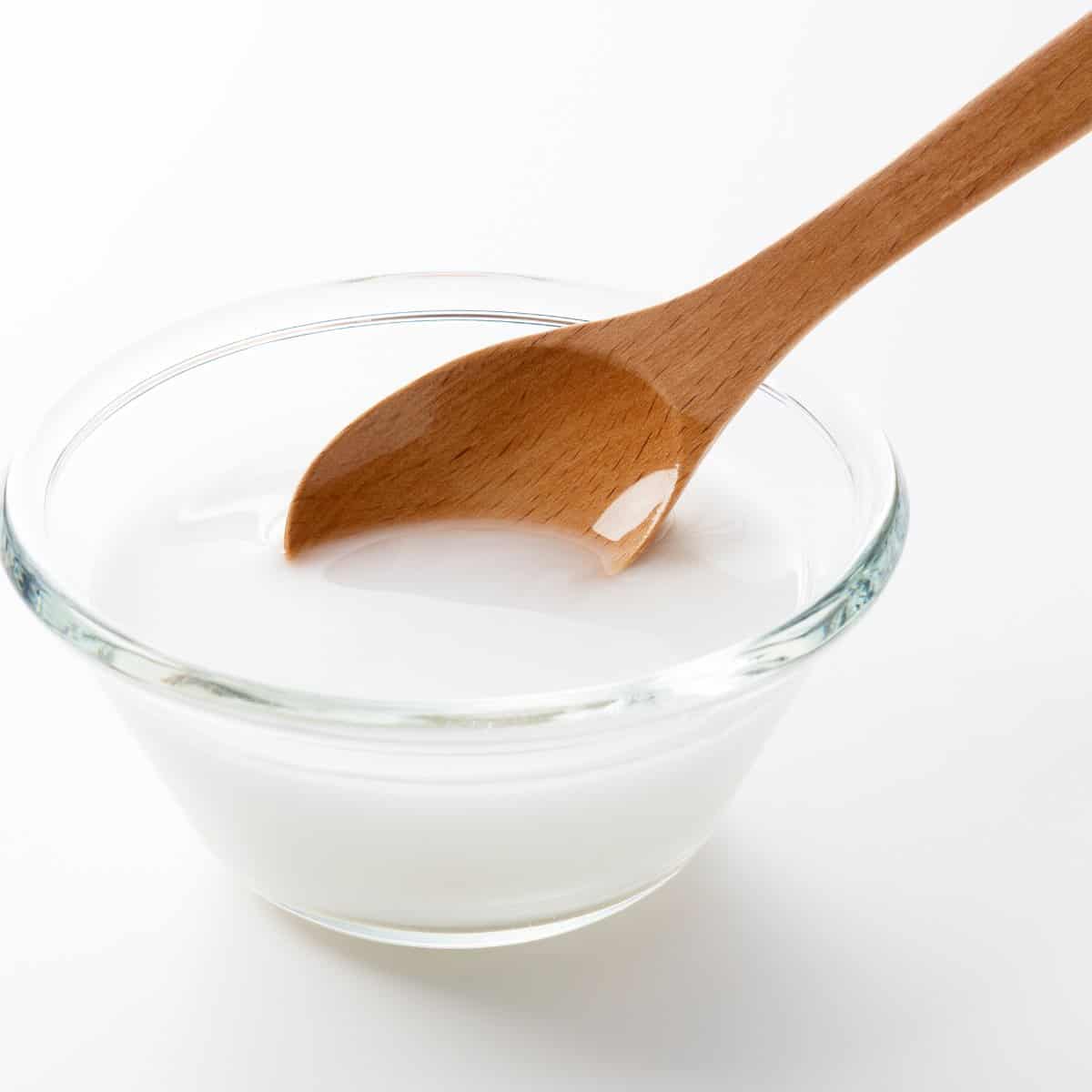Qhala ka ho Pheha: Ntho e 'ngoe le e' ngoe eo U Lokelang ho e Tseba bakeng sa Liphetho tse Phethahetseng
Dissolve ke e 'ngoe ea mantsoe a phehang a utloahalang a majabajaba empa a se thata haholo ho a utloisisa. E mpa e bolela ho etsa mokelikeli ho tsoa ho tiileng.
Ho qhibiliha ke mokhoa o motle oa ho eketsa tatso le monko ho lijana tsa hau. Ke mokhoa o molemo haholo oa ho pheha. O ka qhala hoo e ka bang ntho leha e le efe ka metsing, ho tloha tsoekere ho ea letsoai ho tsokolate ho ea botoro.
Sehloohong sena, ke tla u bontša mokhoa oa ho qhaqha metsoako ho pheha le seo u lokelang ho se hopola ha u etsa joalo.


Sheba buka ea rona e ncha ea ho pheha
Li-recipe tsa lelapa la Bitemybun tse nang le moralo o felletseng oa lijo le tataiso ea recipe.
E leke mahala ka Kindle Unlimited:
Bala mahalaKetsahalong ena re tla koahela:
Ho Hlakola ho Bolela'ng ho Pheha?
Ha re bua ka ho qhibiliha ha ho pheha, re bua ka mokhoa oa ho kopanya motsoako o tiileng le motsoako oa mokelikeli ho etsa motsoako oa homogeneous. Ka mantsoe a bonolo, ho bolela ho etsa hore ntho e omileng e fetohe sebopeho sa mokelikeli. Phello ea ho qhibiliha ke hore motsoako o tiileng o arotsoe ka limolek'hule kapa likaroloana tse nyenyane ho lekana ho tsoakana le mokelikeli.
Ho utloisisa Solubility
Ha se lintho tsohle tse qhibilihang ka metsing kapa lihlapolli tse ling. Sollubility e bolela bokhoni ba ntho e ka qhibilihang ka har'a motsoako o itseng. Ka mohlala, tsoekere e qhibiliha haholo ka metsing, athe oli e itseng ha e na eona. Ho utloisisa ho qhibiliha ha metsoako ke habohlokoa ha ho pheha, kaha ho ka ama sebopeho le tatso ea sejana sa ho qetela.
Ho qhibiliha vs. Ho qhibiliha
Ke habohlokoa ho hlokomela hore ho qhibiliha ha ho tšoane le ho qhibiliha. Ho qhibiliha ho kenyelletsa ho fetola motsoako o tiileng hore e be mokelikeli ka mocheso, ha ho qhibiliha ho kenyelletsa ho kopanya motsoako o tiileng le mokelikeli oa metsi. Ka mohlala, ho qhibiliha botoro ho akarelletsa ho e futhumatsa ho fihlela e fetoha metsi, ha tsoekere e qhibiliha e akarelletsa ho e kopanya le metsi ho fihlela e qhibiliha ka ho feletseng.
Mokhoa oa ho Qhala Ntho Habonolo ka Ho Sebelisa Khaba
Ha o eketsa lisebelisoa ho metsi, limolek'hule tsa thepa li qala ho arohana le ho kopanya le limolek'hule tsa metsi. Motsoako o hlahisoang o bitsoa tharollo. Bokhoni ba thepa ea ho qhibiliha ka metsing bo itšetlehile ka matla a maqhama pakeng tsa limolek'hule tsa eona. Ka mohlala, tsoekere e qhibiliha habonolo ka metsing hobane limolek'hule tsa eona li kopantsoe ke maqhama a fokolang. Ka lehlakoreng le leng, letsoai le na le maqhama a matla pakeng tsa limolek'hule tsa lona 'me le hloka matla a eketsehileng hore le qhibilihe.
Teko e Bonolo ea ho Lekola Tsebo ea Hao
Ho leka tsebo ea hau ea ho qhibiliha, leka teko ena e bonolo:
1. Tlatsa li-cylinders tse peli ka metsi a lekanang, e 'ngoe ka metsi a batang' me e 'ngoe ka metsi a chesang.
2. Kenya khaba ea letsoai ho silindara ka 'ngoe.
3. Hlohlelletsa li-cylinders ka bobeli ka khaba 'me u hlokomele phapang ea mokhoa oa ho qhibiliha.
4. Ela hloko nako e hlokahalang hore letsoai le qhalane ka ho feletseng ka har'a silindara ka 'ngoe.
U tla hlokomela hore letsoai le qhibiliha ka potlako haholo metsing a chesang ha a bapisoa le metsi a batang. Lebaka ke hore limolek'hule tse metsing a chesang li na le matla a mangata, e leng se etsang hore li tsamaee ka potlako 'me li sebelisane le limolek'hule tsa letsoai ka potlako.
Lintlha tsa Bohlokoa Bakeng sa Polokeho le Boitokiso
Ha o qhaqha lisebelisoa ka metsing, ke habohlokoa ho hopola tse latelang:
- Kamehla sebelisa tekanyo e loketseng ea metsi e hlokahalang bakeng sa thepa eo u e qhibilihang.
- Etsa bonnete ba hore metsi a chesa ka ho lekaneng ho potlakisa ts'ebetso ea ho qhibiliha empa ha a chese hoo ho bakang kotsi ea polokeho.
- Sebelisa khaba ho hlohlelletsa motsoako le ho etsa bonnete ba hore thepa e qhibiliha hantle.
- Haeba o eketsa lisebelisoa tse fapaneng metsing, hlokomela hore li ka ama ts'ebetso ea ho qhibiliha le ho fetola ka tsela e nepahetseng.
- Kamehla latela litaelo tse pampiring ea ho itokisa le lintlha life kapa life tse ling tse fanoeng.
Qetellong, lisebelisoa tsa ho qhaqha ka metsing ke mokhoa o bonolo o ka etsoang habonolo ka khaba. Ka ho utloisisa likamano tsa limolek'hule tsa lisebelisoa tse fapaneng le ho latela mehato e boletsoeng ka holimo, u ka qhaqha lisebelisoa ka potlako le ka taolo e kholoanyane. Hopola ho lula u nahana ka polokeho le boitokisetso ha u etsa teko efe kapa efe e amanang le ho qhala.
fihlela qeto e
Kahoo, u na le eona- mokhoa oa ho qhaqha lintho ka ho pheha. Ha e thata joalo ka ha e bonahala, 'me tsebo e nepahetseng e ka etsa phapang eohle. Kahoo u se ke ua tšaba ho etsa liteko 'me u se ke ua lebala ho sebelisa khaba ea hau!
Sheba buka ea rona e ncha ea ho pheha
Li-recipe tsa lelapa la Bitemybun tse nang le moralo o felletseng oa lijo le tataiso ea recipe.
E leke mahala ka Kindle Unlimited:
Bala mahalaJoost Nusselder, mothehi oa Bite My Bun ke morekisi oa litaba, ntate ebile o rata ho leka lijo tse ncha ka lijo tsa Majapane khubung ea takatso ea hae, 'me hammoho le sehlopha sa hae o ntse a theha lingoloa tse tebileng tsa blog ho tloha 2016 ho thusa babali ba tšepahalang ka diresepe le malebela a ho pheha.
